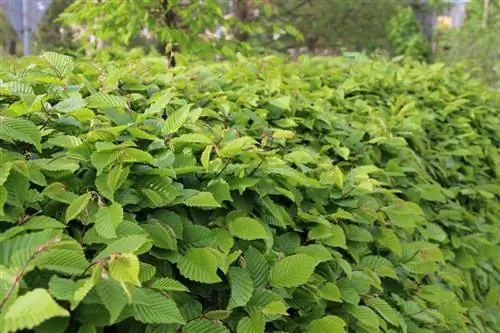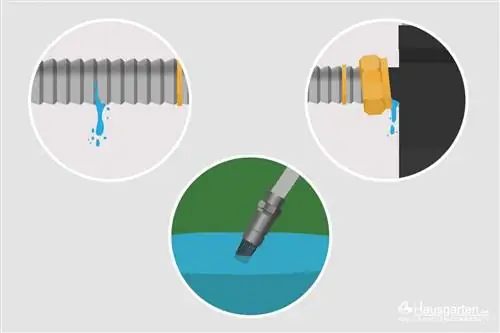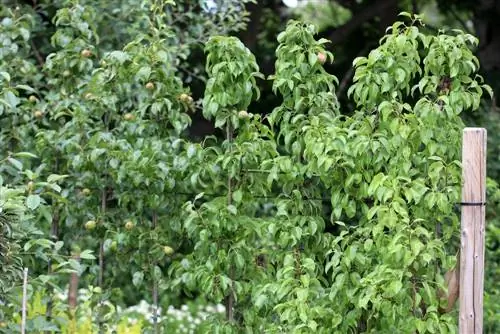- Author admin [email protected].
- Public 2023-12-17 03:39.
- Last modified 2025-01-24 12:45.
An easy-care hedge consists of adaptable and undemanding plants such as deciduous trees, conifers, flowering bushes and/or fruit-bearing trees. But which hedge plants offer good privacy protection without a lot of work?
Deciduous trees for easy-care hedges
Columbian Beech (Fagus sylvatica 'Purpurea')
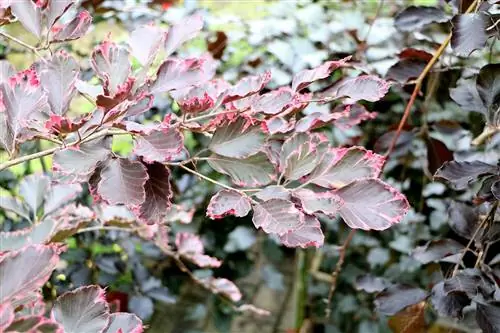
- Grows very dense and wide
- Particularly decorative foliage
- Colorful changing of leaves in different shades of red
- Dark red when budding, later turning green to red-green to dark purple
- Sun to partial shade, nutrient-rich soils, lime-loving
- Avoid heavy clay soils and waterlogging
- Very easy to cut, extremely hardy
- Requires free root space
Field maple (Acer campestre)
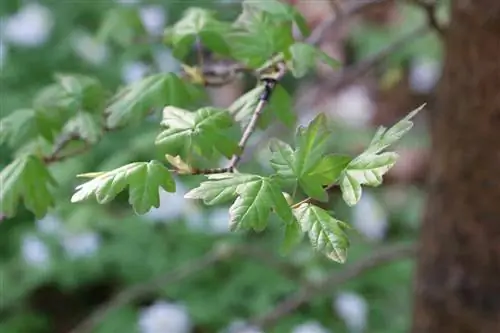
- Dense, sparsely branched, bushy growth
- Also suitable for high hedges
- Magnificent autumn color, bright yellow to orange/red-orange
- Calcareous soil, otherwise undemanding
- Does not tolerate waterlogging
- Extremely cut-tolerant, windproof, very hardy
- Initially compost in spring and water only if the drought persists
- Once grown in, both are no longer necessary
Firethorn (Pyracantha hybrids)
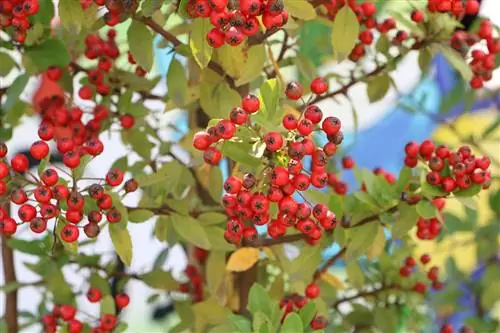
- Easy-care, frost-resistant, very decorative hedge plant
- Grows as a small shrub
- Colorful foliage and fruit hanging
- Berries yellow, red or orange
- Tolerates almost all location and weather conditions
- Thorns make it almost impenetrable
- Good for medium height hedges
- Only water occasionally during prolonged dry periods
- Provide with compost in spring
- Heavier pruning possible in spring
- Smaller corrective cuts after flowering
Common privet (Ligustrum vulgare)
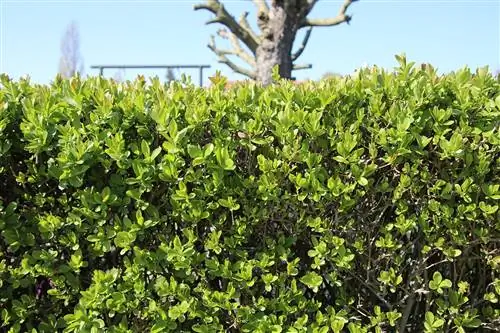
- Grows loosely, spreading, upright shoots
- Can cope with almost all locations and soils
- Summer and evergreen varieties
- Scented, creamy white flowers in June/July
- Very cut-tolerant hedge plant
- Slightly poisonous black-bluish shiny berries
- Prefers calcareous soils and sunny to partially shaded locations
Cotoneaster (Photinia)
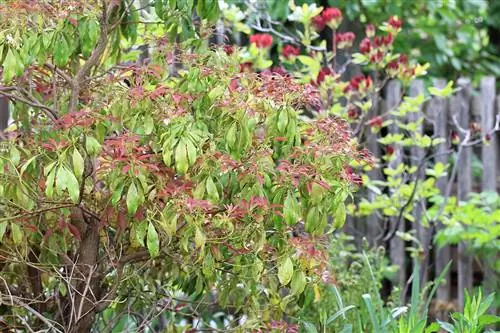
- Broad, bushy, loosely upright growth
- More width as you get older
- Shows its shiny leaves all year round
- Cotoneaster fruits are poisonous
- Remembering mini apples
- Does not tolerate waterlogging
- Only one fertilization per year
Hornbeam (Carpinus betulus)
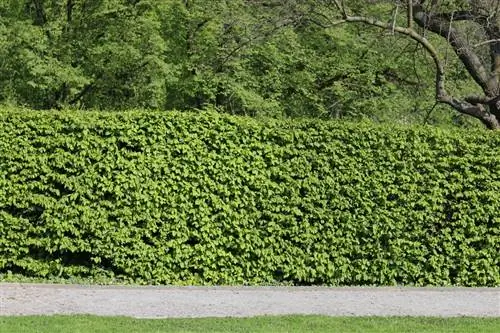
- Native wild wood, ideal hedge plant
- For medium-high and high hedges
- Growth rate 30-35 cm per year
- Relatively strong growth
- Apart from topiary, no further care
- Undemanding in terms of soil and location
- Very cut-friendly, high ejection ability
- Insensitive to diseases and pests
Tip:
The hornbeam is not a beech, but belongs to the birch family.
Evergreen barberry ‘Telstar’
- Impenetrable, vigorous, upright
- Densely branched, shrub-like, hardy
- Dark green leaves, bluish underside
- Bright yellow flowers from May to June
- After flowering, red berries
- For normal and dry soils
- Sunny to partially shaded locations
- Prune after flowering
- Otherwise no care necessary
Copper rock pear (Amelanchier lamarckii)
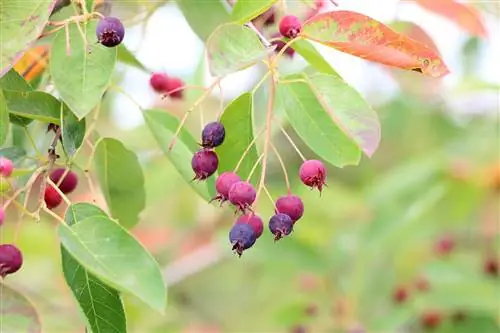
- Very suitable for overgrown and walled hedges
- Impresses with spectacular colors in autumn
- From yellow to orange to red
- From April onwards, countless bright white flower clusters
- Tolerates frost as well as temporary dryness and wetness
- Relatively undemanding to location and soil
- Does not like heavy and waterlogged soils
Holly (Ilex)
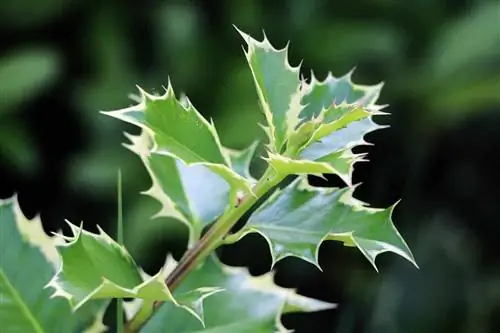
- Evergreen or deciduous deciduous tree
- Robust, cut and frost resistant
- Suitable for formal and mixed hedges
- Leaves leathery, thorny or sawn
- Purely green and variegated varieties
- Different shades of green depending on the variety
- Decorative red fruit decoration in late summer
- Not immediately opaque
- Cut not absolutely necessary
Coniferous trees without much work
Yews (Taxus baccata)
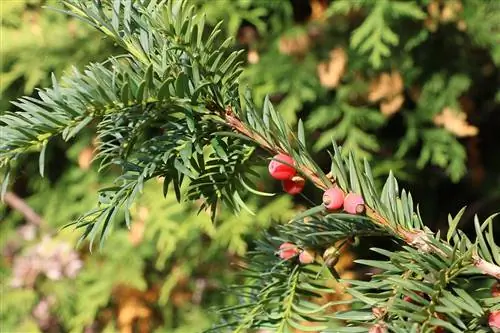
- Grows densely branched, bushy, upright
- Periwinkle with dark needles
- Very cut-friendly, easy to shape
Tree of Life (Thuja occidentalis)
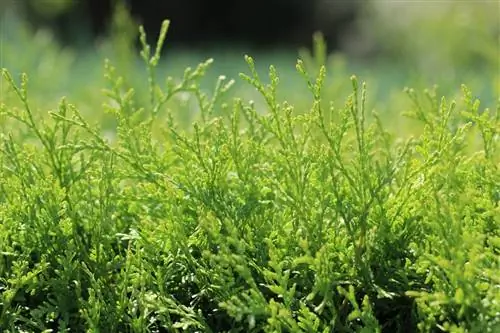
- Good shade and pruning tolerance
- Either male or female flowers
- Fruits: bright red berries
- Sprinkle the root area more often with compost
- Water occasionally if dry conditions persist
Leyland Cypress (Cupressus x leylandii)
- Particularly fast-growing conifer species
- Annual growth up to 80 cm
- Open growth in the first few years
- Only opaque after a while
- Windproof, frost-proof, robust and easy to care for
- Cut twice a year
Juniper (Juniperus)

- All-season, evergreen privacy screen
- Forms loose hedges
- Can be planted almost anywhere
- Very easy to cut, artistic shapes possible
- High drought tolerance
- Water only initially when it is dry
- Doesn't need to be cut so often
Tip:
Juniper is slightly toxic, both the needles and the berries.
Flowering shrubs for easy-care hedges
Azalea (Rhododendron)

- Evergreen or deciduous, hardy shrubs
- Blossom in April/May
- Imposing, magnificent rhododendron blossom
- Sunny or shady locations
- Cutting generally not necessary
- If necessary, cutting back into the old wood is possible
- Loves acidic soils
Bloodcurrant (Ribes sanguineum)
- Upright, compact, early shoots
- Up to 200 cm high
- Flowering period from April to May
- Grape-shaped, deep red and slightly scented flowers
- Fresh, humus-rich garden soil
- Sunny to partially shaded locations
- Little fruit set
- Berries edible, but not very aromatic
Common pipe bush (Philadelphus coronarius)
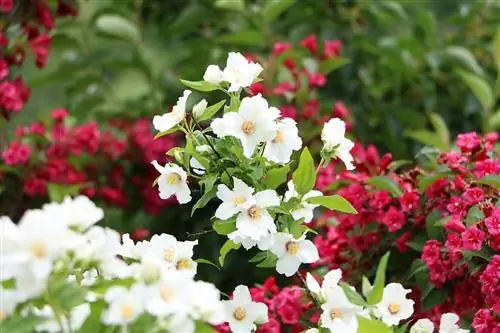
- Initially tightly upright, later overhanging
- Very cut-resistant, hardy, undemanding
- Annual growth 30-50 cm
- May to June, white, intensely fragrant flowers
- Deep green foliage, shedding leaves
- Tolerates all soils, sunny to partially shaded locations
- Apart from occasional editing, hardly any work
Japanese lavender heather (Pieris japonica)
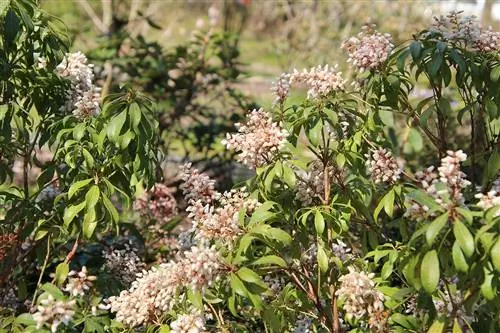
- Upright, dense, overhanging, loosely branched growth
- Evergreen and hardy
- Sprout bronze, later green
- Lily of the valley-like, creamy white or pink flower spikes
- Soil slightly moist, low in nutrients, acidic and lime-free
- Regular fertilization and pruning not absolutely necessary
- Water with lime-free water
Tip:
The lavender heather is poisonous in all parts of the plant.
Kolkwitzia (Kolkwitzia amabilis)
- Good privacy protection, very frost hardy
- Broadly upright, expansive with age, waterfall-like
- Blooms from May to June
- Pastel-colored, slightly shimmering flower umbels with a sweet scent
- Undemanding in terms of location and soil
- Easy to care for, tolerates cutting and shade tolerant
- Also tolerates dry heat
Tip:
The Kolkwitzia is almost resistant to diseases and pests.
Spiraea vanhouttei
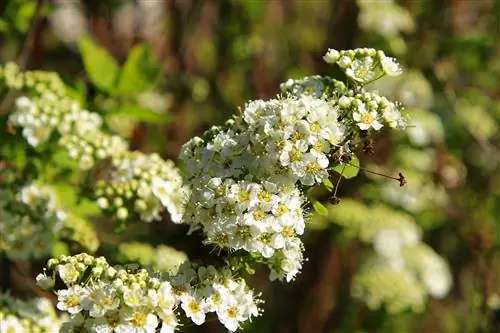
- Upright, broadly bushy, hanging loosely when old
- Annual growth up to 50 cm
- Easy to care for and hardy
- May to June bright white flower umbels
- Can also tolerate severe pruning
- Sunny to semi-shady locations
- No special requirements for soil conditions
Pink Weigela (Weigela florida)
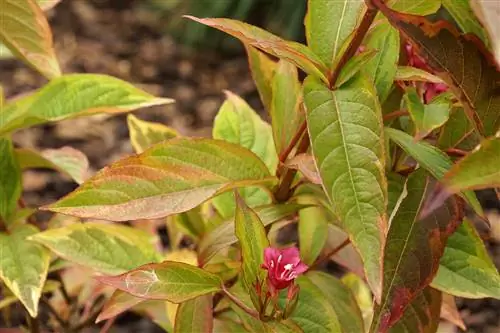
- Strong-growing medium-tall shrub
- About 300 cm high and just as wide
- Blooms from late May to mid-June
- Calyle to funnel-shaped individual flowers
- White to pale pink, becoming a stronger shade of pink as it fades
- From July to frost, occasional reblooms
- Extremely adaptable to location and soil
Butterfly Bush (Buddleja davidii)
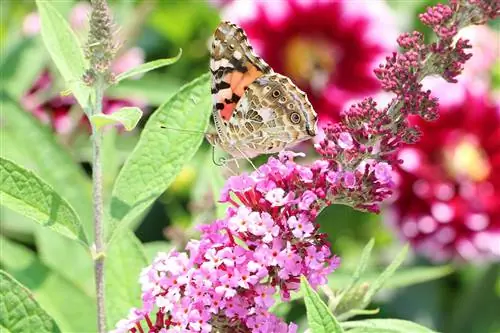
- Easy-care butterfly magnet
- Fragrant, lavishly blooming hedge
- With large white, red or purple flower candles
- Pruning in spring promotes flower size and abundance
- Watering only for young plants
- Underplanting ensures evenly moist soil
- Nutritious, humus-rich, permeable substrates
Hedge plants with edible fruits
Chokeberry (Aronia)
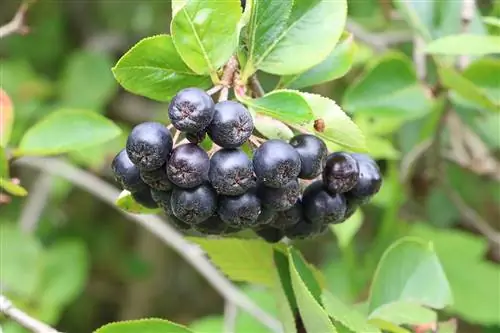
- Broad, dense, upright growth
- Very frugal and easy to care for
- Up to 250 cm high
- Blooms around mid/end of May
- Simple white, umbel-shaped flowers
- Dark purple to black fruits in late summer
- Sunny to partially shaded locations, normal garden soil
- Locations with high soil and air moisture are optimal
- Hardly any work with cutting, only rarely applied
Lilacberry / Black Elderberry (Sambucus nigra)

- Strong-growing, loosely branched, resilient
- Up to 300 cm high and wide
- Dark green, pinnate leaves
- Blooms from June to July
- White, umbrella-shaped umbels
- Small black-purple berries in late summer
- Flowers and fruits for making juice
- Not suitable for fresh consumption
- Normal garden soil, sun to partial shade
Dog rose (Rosa canina)
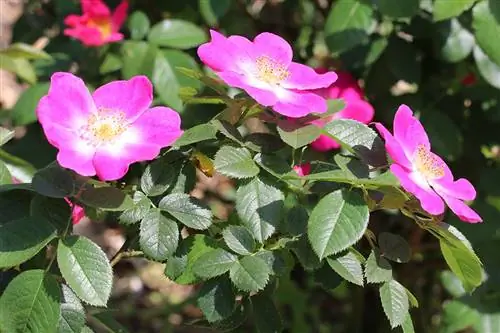
- Upright shrub, forming runners
- Forms long overhanging shoots
- Heat and drought resistant, very frost hardy, tolerates cutting
- Up to 300 cm high and wide
- Blooms from June to July
- Simple, cup-shaped and fragrant white-pink flowers
- Deep, nutrient-rich soils
- Sunny to shady locations
Sea buckthorn (Hippophae rhamnoides)
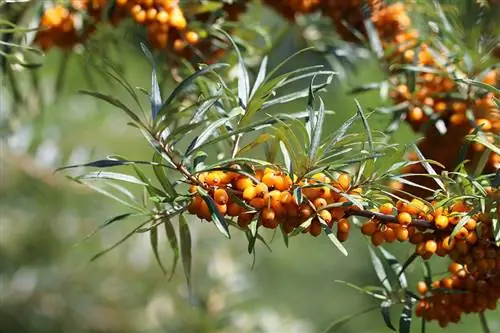
- Strong, sparsely branched growth, forming runners
- Thorny shoots
- Long, narrow, silvery-gray leaves
- Small brown, spherical flowers from April to May
- Orange fruits with high ornamental value
- Hedge is heat, drought and wind resistant
- Frost hardy, tolerates s alt, very cut resistant
- Prefers dry locations
Tip:
Sea buckthorn is an excellent bird feeder and nesting tree.

